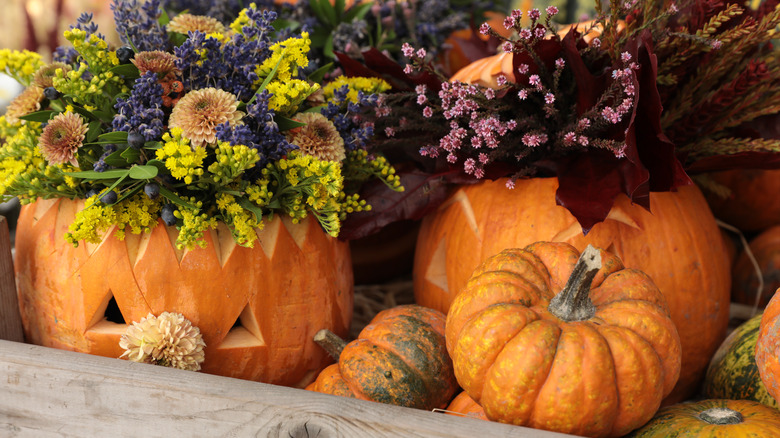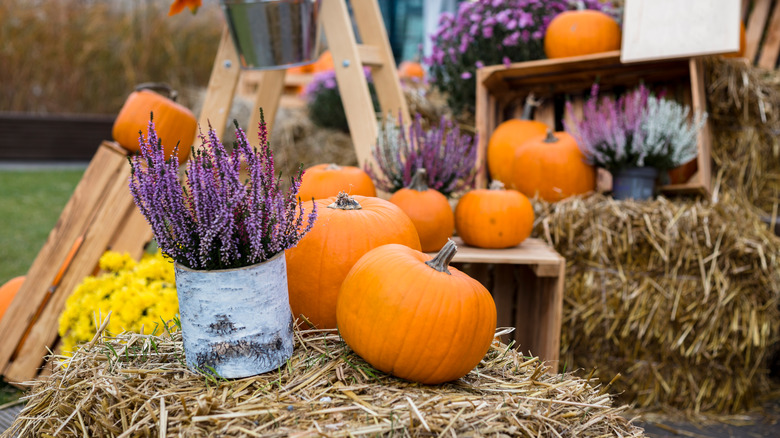The Colorful, Fragrant Flower That's A Companion To Pumpkins
Lavender is such an appealing plant. Its soft colors and amazing scent make it a beloved addition to any garden. Its purple, pink, or white blossoms and silvery foliage adorn landscapes, delighting both the eyes and the senses with their aromatic allure. Lavender even has potential health benefits, such as antimicrobial and antiviral properties and the ability to assist with sleep issues. But did you know that lavender can also be a great helper for the other plants in your fall garden?
Beyond its stunning beauty, enticing fragrance, and numerous possible health advantages, you might be surprised to learn that lavender can be an excellent addition to the pumpkin patch growing in your yard. A harmonious partnership between these two distinct plants might seem unexpected, but it's rooted in the fascinating world of companion planting. Lavender brings not only its aesthetic charm but also some unique perks to the pumpkin patch, contributing to a healthier, more vibrant yield.
How to use lavender as a companion for your pumpkins
Start by strategically placing lavender plants around your pumpkin vines. Consider spacing them at intervals throughout your pumpkin patch to create an effective pest-repelling barrier. Alternatively, you can plant clusters of lavender near the edges of your pumpkin beds to establish a fragrant and visually appealing border. Another option is to grow lavender in containers and place the pots around your pumpkins.
Lavender thrives in full sunlight, so plant it in a spot that receives at least six to eight hours of direct sunlight each day. Well-drained soil is essential for the flowers, so make sure your garden beds provide good drainage. Amending the soil with organic matter can help improve its texture. Also, when arranging your companion plants, it's essential to avoid overcrowding. Lavender doesn't compete for nutrients with pumpkins, but you still want to ensure there's enough space for both to grow comfortably. Consider planting lavender rows or clusters between pumpkin hills or along the garden's edges.
Why lavender and pumpkin companion planting works so well
Lavender is a fantastic companion plant for pumpkins due to its natural properties. The strong fragrance of the herb acts as a natural deterrent for a variety of garden pests, including fleas, moths, and even deer. Additionally, lavender can attract pollinators such as bees and butterflies, which are helpful in fertilizing pumpkin flowers and increasing fruit production. Planting lavender nearby creates a welcoming environment for these beneficial garden helpers while keeping undesired visitors away.
Gardening is both an art and a science, so don't be afraid to explore different possibilities. Try various types of lavender and other companion plants that complement both lavender and pumpkins. With a little knowledge and care, you can create a thriving garden that celebrates the beauty and benefits of this dynamic duo. Using lavender as a natural protector for your pumpkins achieves both effectiveness and environmental friendliness.

